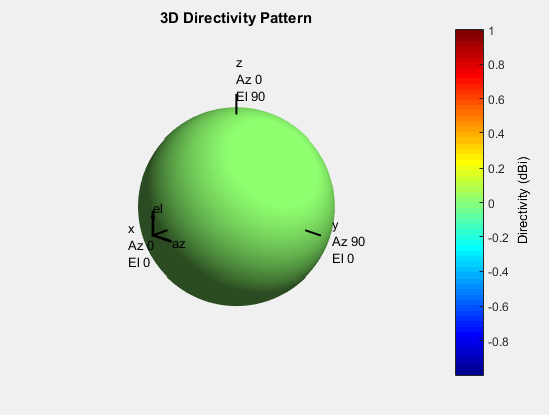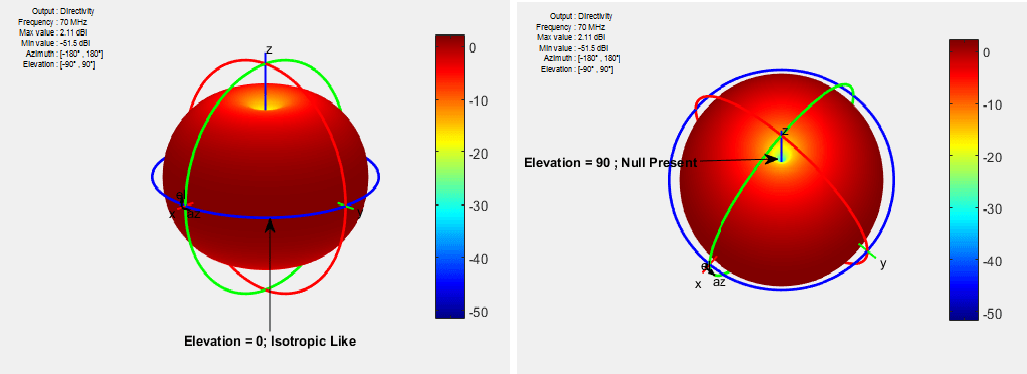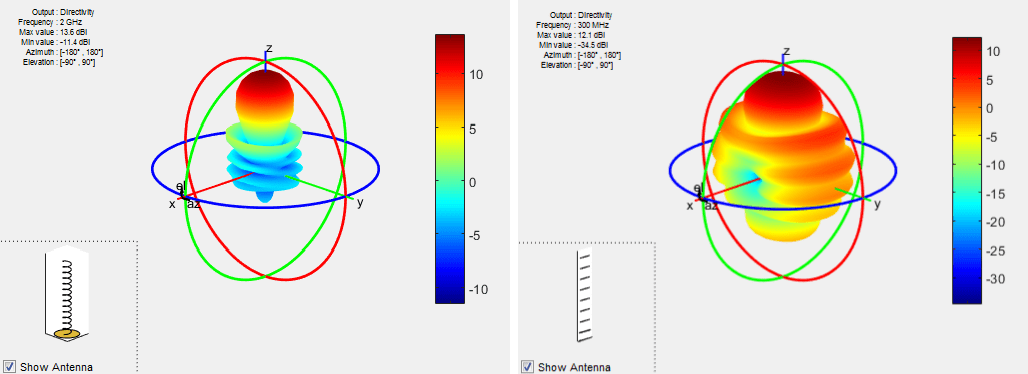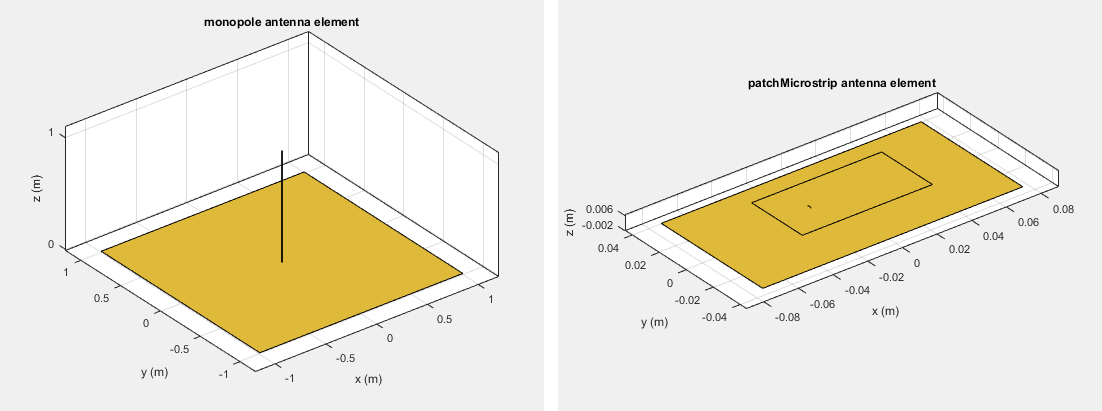Antenna Classification
Antennas are classified based on the radiation pattern or the feeding mechanism. Antenna radiation pattern is the angular variation of signal strength around the antenna. Feeding mechanism defines how the signal is fed into the antenna and the location of the feed point on the antenna.
Radiation Pattern
Isotropic Antenna
An isotropic antenna is an ideal lossless antenna that radiates uniformly in all directions. The antenna has no spatial selectivity or nulls. Practical antennas are compared against the isotropic antenna, but they rarely behave like one.

Omnidirectional Antenna
Omnidirectional antennas behave like isotropic antennas
in one plane. These antennas have nulls in the orthogonal plane. A common
example of an omnidirectional antenna is the dipole antenna.

The dipole is omnidirectional around the E-plane, or elevation angle. The null is present in the H-plane, or azimuth angle.
Directional Antennas
Directional antennas are highly directive in a given
direction. These antennas show high spatial selectivity, narrow bandwidth. They
also have well defined major, or main, beam in the desired directions. Common
examples of directional antennas are helix and yagiUda.

Antenna Feeding Mechanism
Balanced Antennas
In balanced antennas, one side of the antenna is a mirror image of the other. These antennas require a balun to feed it, using a coaxial line. Common examples are: dipoles, bowties, spirals, and loops.

Unbalanced Antennas
Unbalanced antennas are end fed and mounted on top of a ground plane. The coaxial shield is connected to the ground, and the center conductor is connected to the antenna element. Common examples are monopoles and patches.

References
[1] Balanis, C.A. Antenna Theory: Analysis and Design. 3rd Ed. New York: Wiley, 2005.